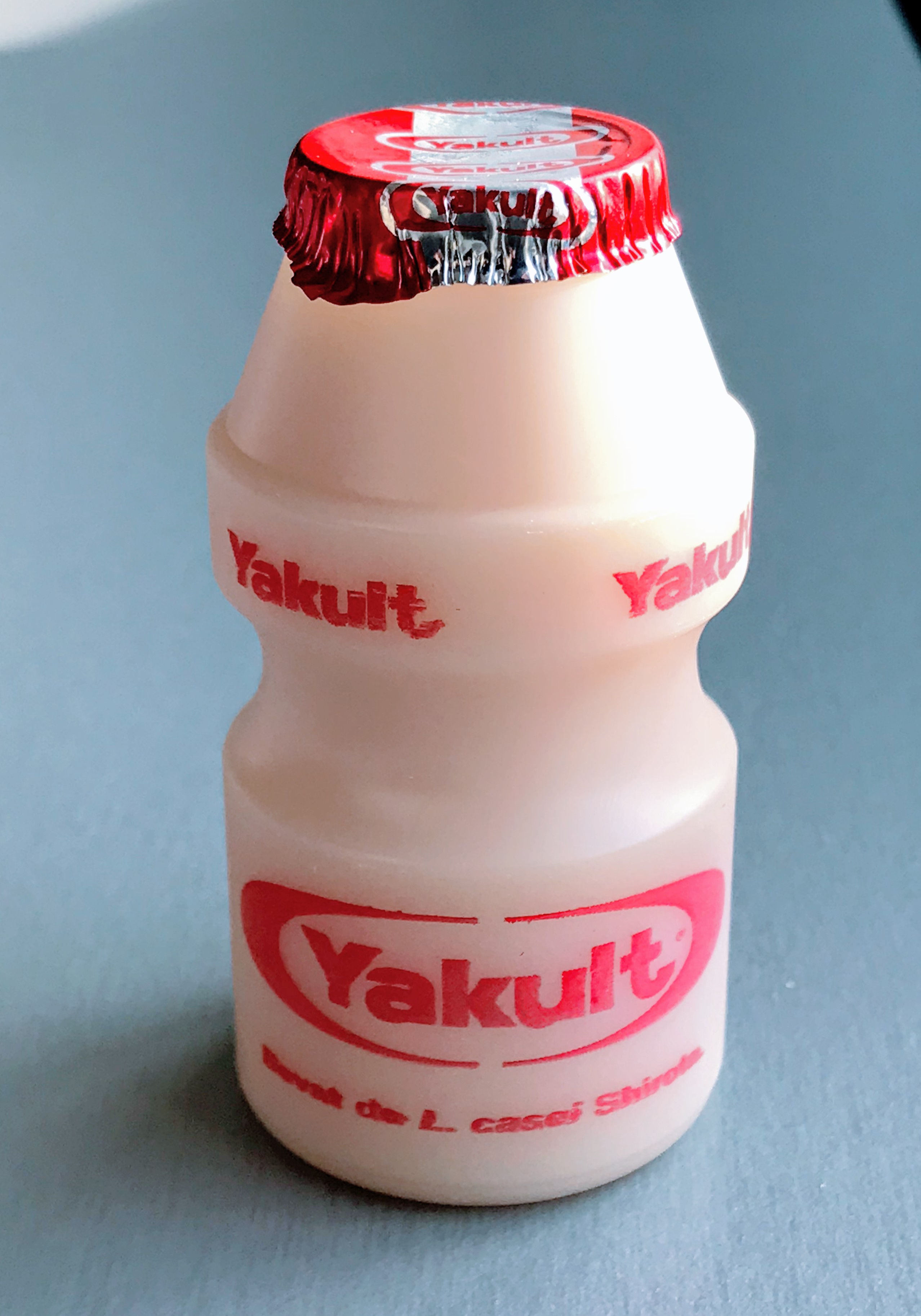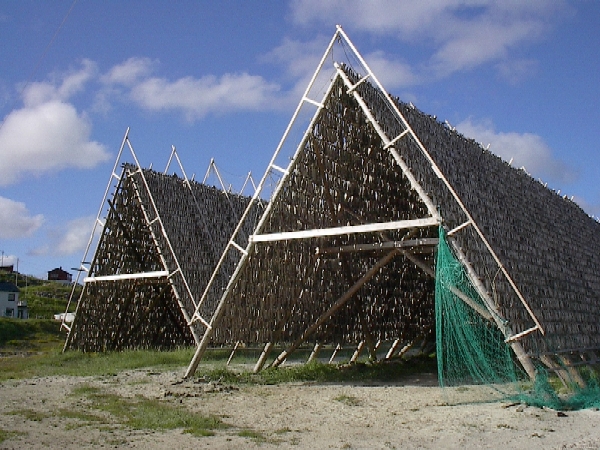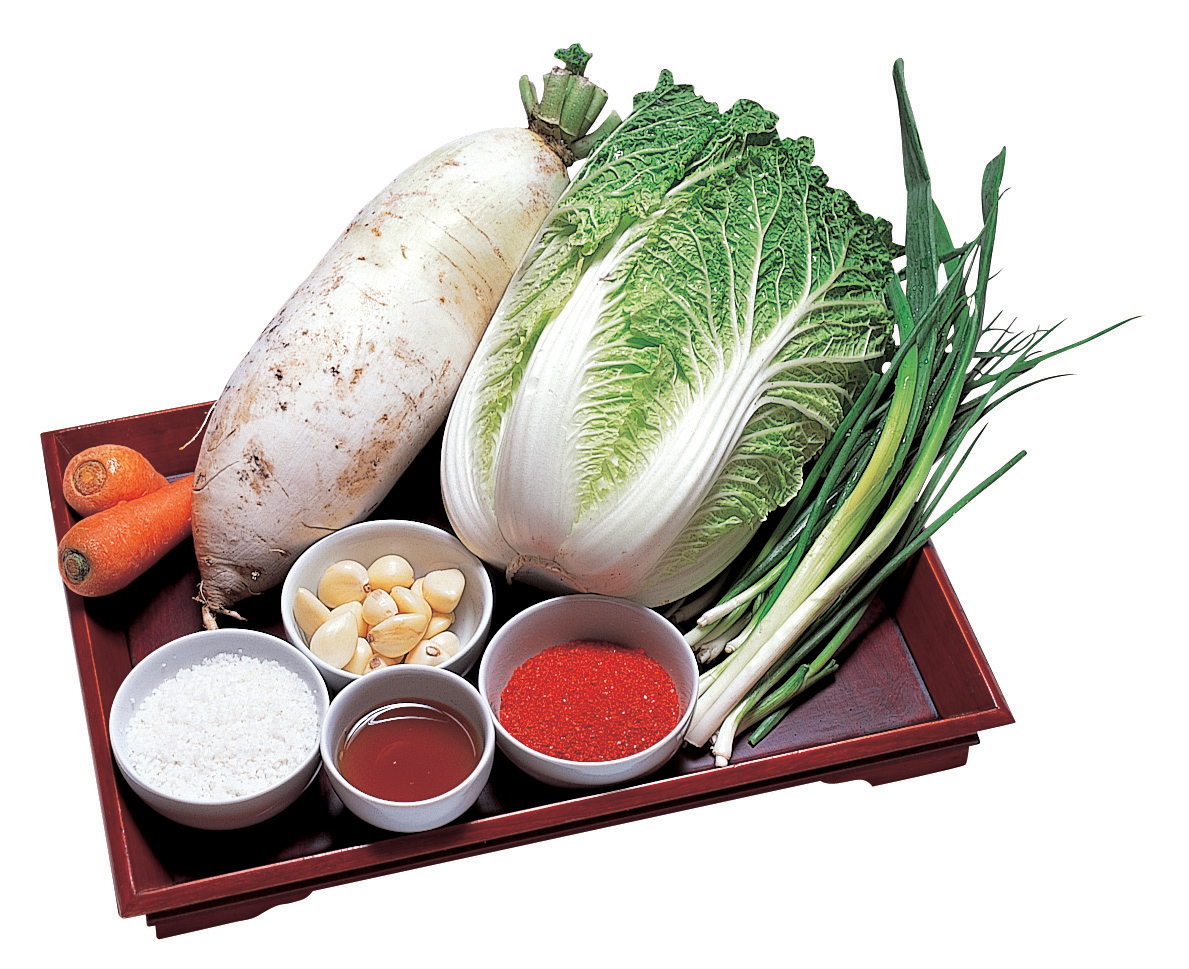|
Lactobacillus Plantarum
''Lactiplantibacillus plantarum'' (formerly ''Lactobacillus arabinosus'' and ''Lactobacillus plantarum'') is a widespread member of the genus ''Lactiplantibacillus'' and commonly found in many fermented food products as well as anaerobic plant matter. ''L. plantarum'' was first isolated from saliva. Based on its ability to temporarily persist in plants, the insect intestine and in the intestinal tract of vertebrate animals, it was designated as a nomadic organism. ''L. plantarum'' is Gram positive, bacilli shaped bacterium. ''L. plantarum'' cells are rods with rounded ends, straight, generally 0.9–1.2 μm wide and 3–8 μm long, occurring singly, in pairs or in short chains. ''L. plantarum'' has one of the largest genomes known among the lactic acid bacteria and is a very flexible and versatile species. It is estimated to grow between pH 3.4 and 8.8. ''Lactiplantibacillus plantarum'' can grow in the temperature range 12 °C to 40 °C. The viable counts of the "L. plant ... [...More Info...] [...Related Items...] OR: [Wikipedia] [Google] [Baidu] |
Saliva
Saliva (commonly referred as spit or drool) is an extracellular fluid produced and secreted by salivary glands in the mouth. In humans, saliva is around 99% water, plus electrolytes, mucus, white blood cells, epithelial cells (from which DNA can be extracted), enzymes (such as lingual lipase and amylase), and antimicrobial agents (such as secretory IgA, and lysozymes). The enzymes found in saliva are essential in beginning the process of digestion of dietary starches and fats. These enzymes also play a role in breaking down food particles entrapped within dental crevices, thus protecting teeth from bacterial decay. Saliva also performs a lubricating function, wetting food and permitting the initiation of swallowing, and protecting the oral mucosa from drying out. Saliva has specialized purposes for a variety of animal species beyond predigestion. Certain swifts construct nests with their sticky saliva. The foundation of bird's nest soup is an aerodramus nest. Venom ... [...More Info...] [...Related Items...] OR: [Wikipedia] [Google] [Baidu] |
Silage
Silage is fodder made from green foliage crops which have been preserved by fermentation (food), fermentation to the point of souring. It is fed to cattle, sheep and other ruminants. The fermentation and storage process is called ''ensilage'', ''ensiling'', or ''silaging''. The exact methods vary, depending on available technology, local tradition and prevailing climate. Silage is usually made from grass crops including maize, sorghum or other cereals, using the entire green plant (not just the grain). Specific terms may be used for silage made from particular crops: ''oatlage'' for oats, ''haylage'' for alfalfa (''haylage'' may also refer to high dry matter silage made from hay). History Using the same technique as the process for making sauerkraut, green fodder was preserved for animals in parts of Germany since the start of the 19th century. This gained the attention of French agriculturist Auguste Goffart of Sologne, near Orléans. He published a book in 1877 which describ ... [...More Info...] [...Related Items...] OR: [Wikipedia] [Google] [Baidu] |
Probiotics
Probiotics are live microorganisms that provide health benefits when consumed, generally by improving or restoring the microbiota in the Gut microbiota, gut. Probiotics are considered GRAS, generally safe to consume, but may cause bacteria–Host (biology), host interactions and unwanted side effects in rare cases. There is some evidence that probiotics are beneficial for some conditions, such as helping to ease some symptoms of irritable bowel syndrome (IBS). However, many claimed health benefits, such as treating eczema, or curing vaginal infections lack substantial scientific support. The first discovered probiotic was a certain strain of bacillus in Bulgarian yoghurt, called ''Lactobacillus bulgaricus''. The discovery was made in 1905 by Bulgarian physician and microbiologist Stamen Grigorov. The modern-day theory is generally attributed to Russian Nobel Prize laureate Élie Metchnikoff, who postulated around 1907 that yoghurt-consuming Bulgarian peasants lived longer. A ... [...More Info...] [...Related Items...] OR: [Wikipedia] [Google] [Baidu] |
Stockfish
Stockfish is unsalted fish, especially cod, dried by cold air and wind on wooden racks (which are called "hjell" in Norway) on the foreshore. The drying of food is the world's oldest known preservation method, and dried fish has a storage life of several years. The method is cheap and effective in suitable climates; the work can be done by the fisherman and family, and the resulting product is easily transported to market. Over the centuries, several variants of dried fish have evolved. The ''stockfish'' (fresh dried, not salted) category is often mistaken for the ''klippfisk'', or salted cod, category where the fish is salted before drying. Salting was not economically feasible until the 17th century, when cheap salt from southern Europe became available to the maritime nations of northern Europe. Stockfish is cured in a fermentation process where cold-adapted bacteria matures the fish, similar to the maturing process of cheese. In English legal records of the medieval ... [...More Info...] [...Related Items...] OR: [Wikipedia] [Google] [Baidu] |
Fermented Sausages
Fermented sausage, or dry sausage, is a type of sausage that is created by salting chopped or ground meat to remove moisture, while allowing beneficial bacteria to break down sugars into flavorful molecules. Bacteria, including ''Lactobacillus'' species and ''Leuconostoc'' species, break down these sugars to produce lactic acid, which not only affects the flavor of the sausage, but also lowers the pH from 6.0 to 4.5–5.0, preventing the growth of bacteria that could spoil the sausage. These effects are magnified during the drying process, as the salt and acidity are concentrated as moisture is extracted. The ingredients found in a fermented sausage include meat, fat, bacterial culture, salt, spices, sugar and nitrite. Nitrite is commonly added to fermented sausages to speed up the curing of meat and also impart an attractive colour while preventing the growth of the ''Clostridium botulinum'' bacteria which causes botulism. Some traditional and artisanal producers avoid nitrite ... [...More Info...] [...Related Items...] OR: [Wikipedia] [Google] [Baidu] |
Cheese
Cheese is a type of dairy product produced in a range of flavors, textures, and forms by coagulation of the milk protein casein. It comprises proteins and fat from milk (usually the milk of cows, buffalo, goats or sheep). During production, milk is usually acidified and either the enzymes of rennet or bacterial enzymes with similar activity are added to cause the casein to coagulate. The solid curds are then separated from the liquid whey and pressed into finished cheese. Some cheeses have aromatic molds on the rind, the outer layer, or throughout. Over a thousand types of cheese exist, produced in various countries. Their styles, textures and flavors depend on the origin of the milk (including the animal's diet), whether they have been pasteurised, the butterfat content, the bacteria and mold, the processing, and how long they have been aged. Herbs, spices, or wood smoke may be used as flavoring agents. Other added ingredients may include black pepper, ... [...More Info...] [...Related Items...] OR: [Wikipedia] [Google] [Baidu] |
Sourdough
Sourdough is a type of bread that uses the fermentation by naturally occurring yeast and lactobacillus bacteria to raise the dough. In addition to leavening the bread, the fermentation process produces lactic acid, which gives the bread its distinctive sour taste and improves its keeping-qualities. History Sourdough is one of the most ancient forms of bread. It was the standard method of breadmaking for most of human history until the Middle Ages, when it was replaced by barm. Barm, in turn, was replaced in the late 19th and early 20th centuries by industrially produced baker's yeast. The ''Encyclopedia of Food Microbiology'' states: "One of the oldest sourdough breads dates from 3700 BCE and was excavated in Switzerland, but the origin of sourdough fermentation likely relates to the origin of agriculture in the Fertile Crescent and Egypt several thousand years earlier", and "Bread production relied on the use of sourdough as a leavening agent for most of human history; the ... [...More Info...] [...Related Items...] OR: [Wikipedia] [Google] [Baidu] |
Ogi (food)
Ogi (also known as Pap or ''Akamu'') is a cereal pudding and popular street food from Nigeria, typically made from maize, sorghum, or millet. Traditionally, the grains are soaked in water for up to three days, before wet-milling or grinding and sieving to remove husks. The filtered cereal is then poured into a cheese clothe to get rid of water used in sieving and can be stored in it or in a fridge. It is then boiled into a pap, or cooked to make a creamy pudding also known as Agidi or Eko. It may be eaten with moin moin, acarajé or bread depending on individual choice. In Kenya, the porridge is known as uji (not to be confused with ugali) and is generally made with millet and sorghum. It is commonly served for breakfast and dinner, but often has a thinner gravy-like consistency. The fermentation of ''ogi'' is performed by various lactic acid bacteria including ''Lactobacillus'' spp and various yeasts including ''Saccharomyces'' and ''Candida'' spp. See also * Boza – Fermen ... [...More Info...] [...Related Items...] OR: [Wikipedia] [Google] [Baidu] |
Kimchi
Kimchi (; ) is a traditional Korean side dish (''banchan'') consisting of salted and fermented vegetables, most often napa cabbage or Korean radish. A wide selection of seasonings are used, including '' gochugaru'' (Korean chili powder), spring onions, garlic, ginger, and '' jeotgal'' (salted seafood). Kimchi is also used in a variety of soups and stews. Kimchi is a staple food in Korean cuisine and is eaten as a side dish with almost every Korean meal. There are hundreds of different types of kimchi made with different vegetables as the main ingredients. Examples of variants include ''baechu-kimchi'', ''kkakdugi'', '' chonggak-kimchi'', and '' oi-sobagi''. Traditionally, winter kimchi, called '' gimjang'', was stored in large earthenware fermentation vessels, called '' onggi'', in the ground to prevent freezing during the winter months and to keep it cool enough to slow down the fermentation process during summer months. The process of making kimchi was called gimjan ... [...More Info...] [...Related Items...] OR: [Wikipedia] [Google] [Baidu] |
Olives
The olive, botanical name ''Olea europaea'' ("European olive"), is a species of Subtropics, subtropical evergreen tree in the Family (biology), family Oleaceae. Originating in Anatolia, Asia Minor, it is abundant throughout the Mediterranean Basin, with wild subspecies in Africa and western Asia; modern Cultivar, cultivars are traced primarily to the Near East, Aegean Sea, and Strait of Gibraltar. The olive is the type species for its genus, ''Olea'', and lends its name to the Oleaceae plant family, which includes species such as Syringa vulgaris, lilac, jasmine, forsythia, and Fraxinus, ash. The olive fruit is classed botanically as a drupe, similar to the cherry or peach. The term oil—now used to describe any Viscosity, viscous Hydrophobe, water-insoluble liquid—was virtually synonymous with olive oil, the Vegetable oil, liquid fat made from olives. The olive has deep historical, economic, and cultural significance in the Mediterranean; Georges Duhamel (author), George ... [...More Info...] [...Related Items...] OR: [Wikipedia] [Google] [Baidu] |
Sauerkraut
Sauerkraut (; , ) is finely cut raw cabbage that has been fermented by various lactic acid bacteria. It has a long shelf life and a distinctive sour flavor, both of which result from the lactic acid formed when the bacteria ferment the sugars in the cabbage leaves. Overview and history Fermented foods have a long history in many cultures. The Roman writers Cato (in his '' De agri cultura'') and Columella (in his '' De re Rustica'') mentioned preserving cabbages and turnips with salt. According to Wilhelm Holzapfel et al, Plinius the Elder, writing in the first century A.D., is reputed to have been the first writer to describe the making of sauerkraut by preserving what the Romans called ''salt cabbage'' in earthen vessels. Popular folklore has imagined that sauerkraut was introduced to Europe by the trade networks formed across Eurasia by the Golden Horde. However, according to Mack and Surina (2005), there is no evidence to support this theory, nor any evidence that f ... [...More Info...] [...Related Items...] OR: [Wikipedia] [Google] [Baidu] |
Lignocellulosic Biomass
Lignocellulose refers to plant dry matter (biomass), so called lignocellulosic biomass. It is the most abundantly available raw material on the Earth for the production of biofuels. It is composed of two kinds of carbohydrate polymers, cellulose and hemicellulose, and an aromatic-rich polymer called lignin. Any biomass rich in cellulose, hemicelluloses, and lignin are commonly referred to as lignocellulosic biomass. Each component has a distinct chemical behavior. Being a composite of three very different components makes the processing of lignocellulose challenging. The evolved resistance to degradation or even separation is referred to as recalcitrance. Overcoming this recalcitrance to produce useful, high value products requires a combination of heat, chemicals, enzymes, and microorganisms. These carbohydrate-containing polymers contain different sugar monomers (six and five carbon sugars) and they are covalently bound to lignin. Lignocellulosic biomass can be broadly classifi ... [...More Info...] [...Related Items...] OR: [Wikipedia] [Google] [Baidu] |







